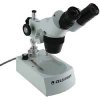Odie
Panning for Montana gold, with Betsy, the mule!
I'm considering getting an inexpensive hand held microscope for viewing the cutting edges of my turning tools. I know how well they will cut, but I'd like to see the reasons why some edges are better than others. I also intend on experimenting with alternative methods of sharpening.......
I ran across this little 100x microscope that could be had for under ten bucks.
click:
http://cgi.ebay.com/60x-100x-LED-PO...emQQptZLH_DefaultDomain_0?hash=item588520ab74
Now....here's the question:
Is something like this suitable for my purposes?
Is 100x powerful enough?
Is something this cheap capable of doing the job?
I see a couple others that are 45x and 200x.....just run a search for "microscope" on ebay.......
What's your opinion?.....comments and suggestions?
Thanx
ooc
I ran across this little 100x microscope that could be had for under ten bucks.
click:
http://cgi.ebay.com/60x-100x-LED-PO...emQQptZLH_DefaultDomain_0?hash=item588520ab74
Now....here's the question:
Is something like this suitable for my purposes?
Is 100x powerful enough?
Is something this cheap capable of doing the job?
I see a couple others that are 45x and 200x.....just run a search for "microscope" on ebay.......
What's your opinion?.....comments and suggestions?
Thanx
ooc




